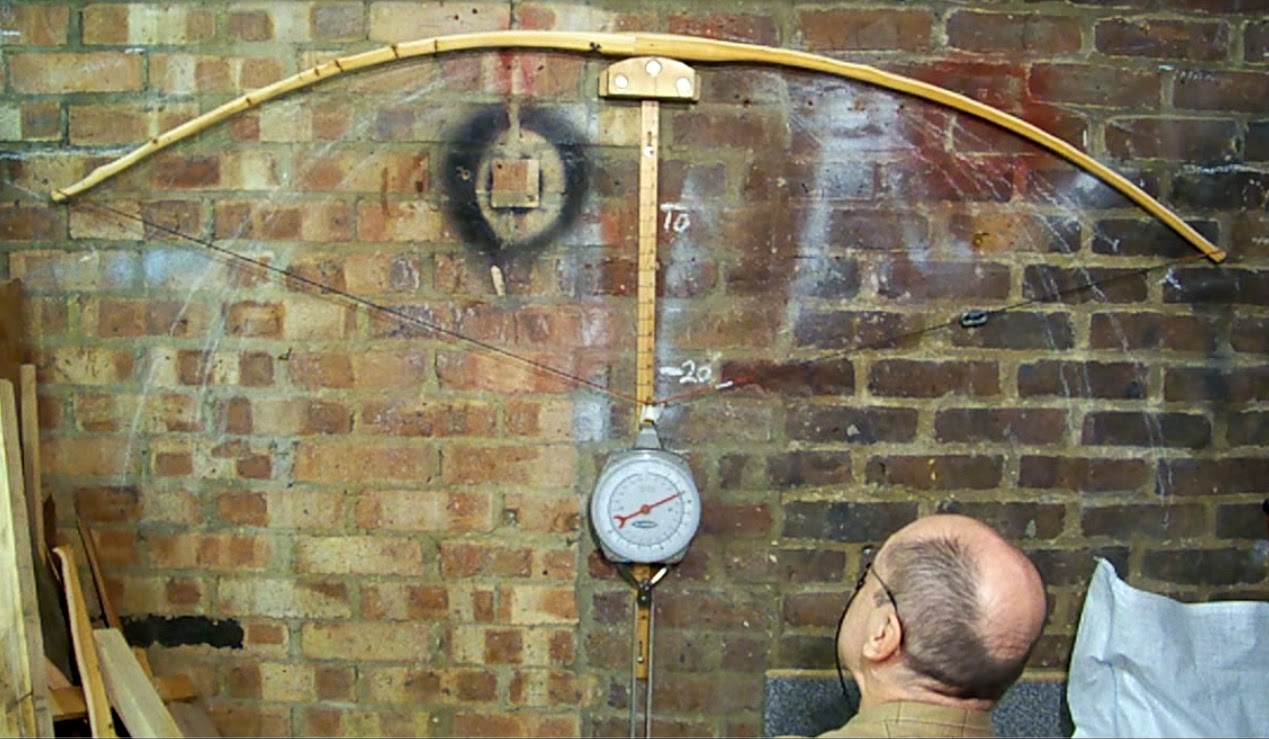 The horn nocks are done and I've adjusted the tiller a bit more. The shape is pretty good now, there is always room for a little tweaking, but I'll get it shot in now. I've made a string so I shall be shooting some arrows through it today then fiddling and fettling with the horn nocks grip, arrow pass etc.
The horn nocks are done and I've adjusted the tiller a bit more. The shape is pretty good now, there is always room for a little tweaking, but I'll get it shot in now. I've made a string so I shall be shooting some arrows through it today then fiddling and fettling with the horn nocks grip, arrow pass etc.The guy I'm making it for tells me he uses black arrows with black fletchings so I though I'd go for a black leather grip and Mother of Pearl arrow plate for contrast.
There is still plenty of sanding etc to do, but I think it will be a very handsome bow. The question will then be how fast is it?
This pic is grabbed from video. The left limb bends more on the inner third than the right. If I do anything it will be to ease off the right limb near the grip, I may well leave it well alone for fear of dropping draw weight. It's between 40 and 45# at 30" at the moment.
Update:-
 I've made the string and shot 4 arrows from a full 28" draw using my 'standard arrows' they hit clean true and fast. At 28" draw it must be below 40# yet it felt about the same as my regular bow 'Twister' (47#).
I've made the string and shot 4 arrows from a full 28" draw using my 'standard arrows' they hit clean true and fast. At 28" draw it must be below 40# yet it felt about the same as my regular bow 'Twister' (47#).My longer arrows are a bit heavy for it but they shoot very smoothly.
I have some arrows with the points broken off, I'll splice on new ends and make 'em up to suit a 30" draw, then I'll see how I get on at a longer draw, dunno if I'll be accurate enough at 30" draw to shoot through the chrono'. I'll try to get some figures. She certainly shoots nicely, back to the fiddling and fettling.
I've done some drawing of ellipses over the full draw pic. Due to the stiff grip section a single ellipse doesn't fit very well, but if we draw an ellipse for each limb with the centres on the ends of the grip it shows a good fit, quite what this means who knows! But it's a good way to show up any real missmatch in limbs.







































